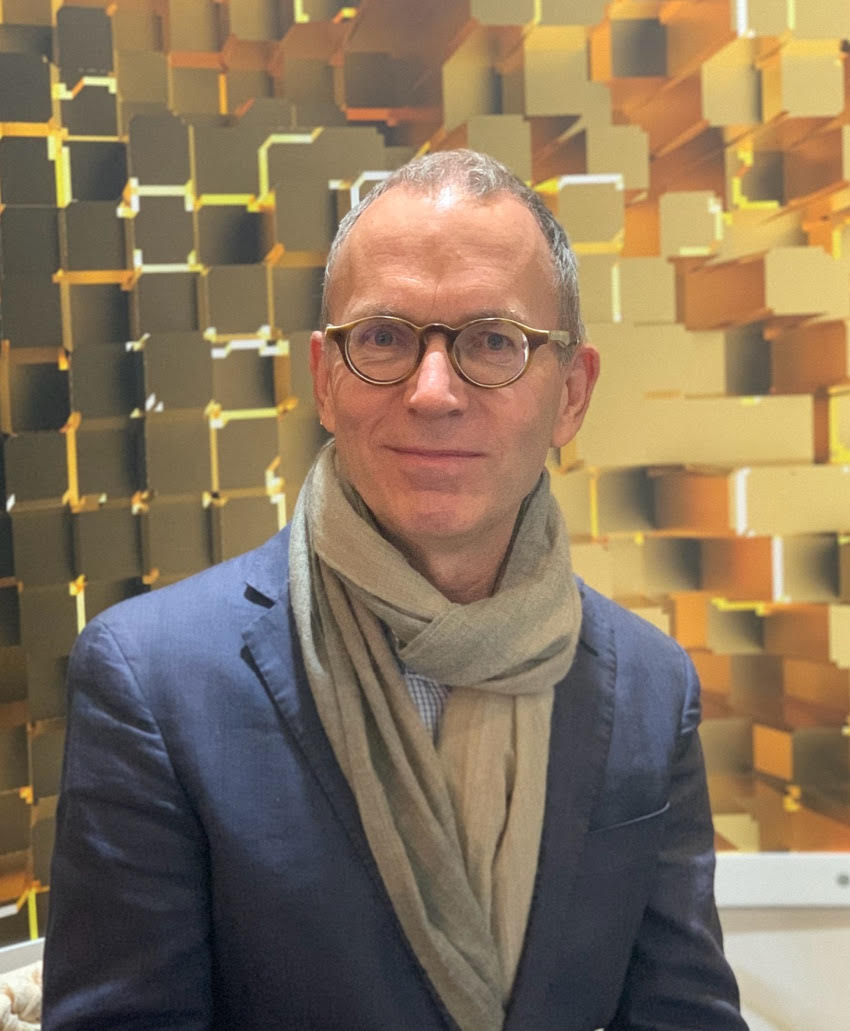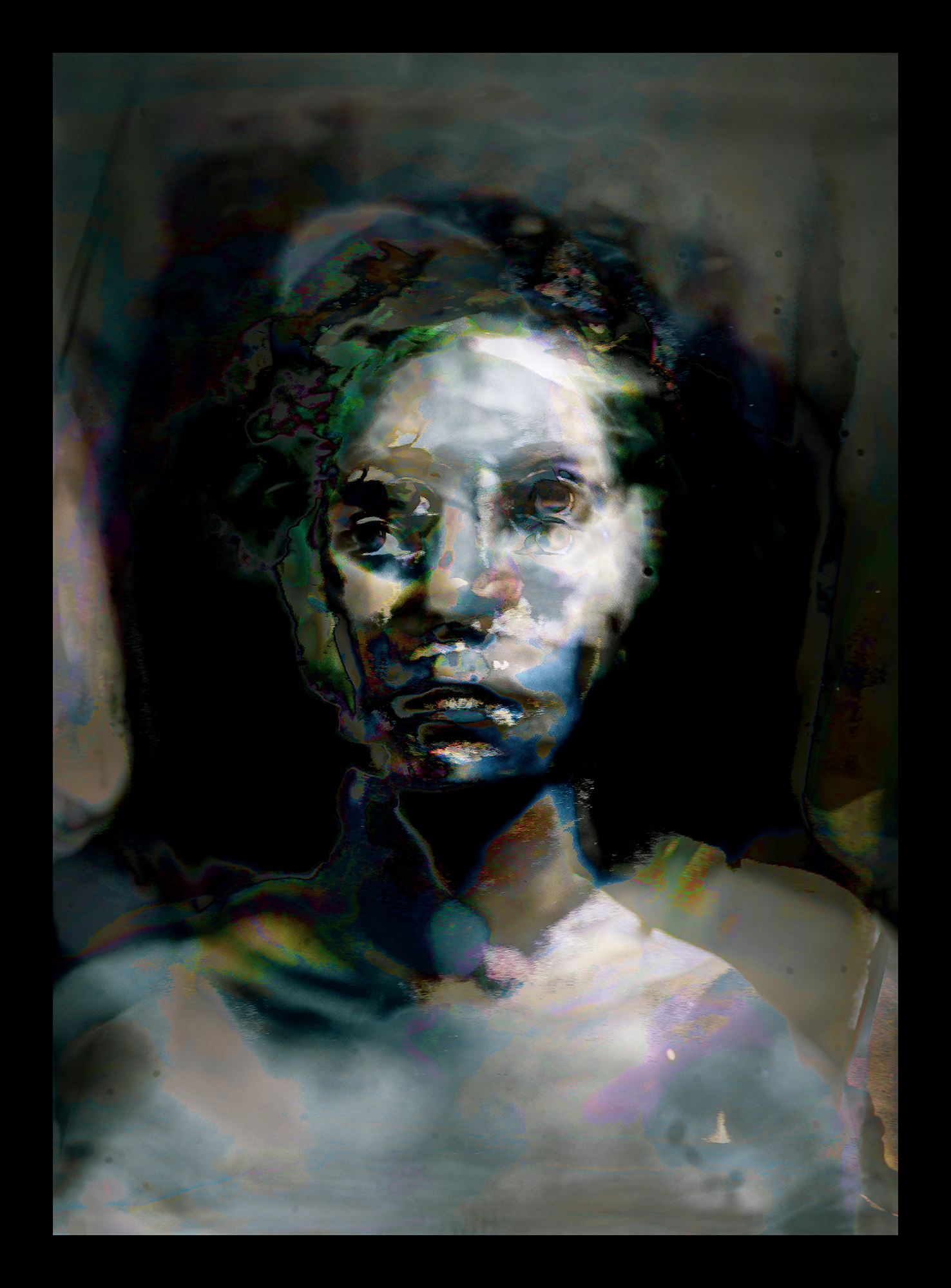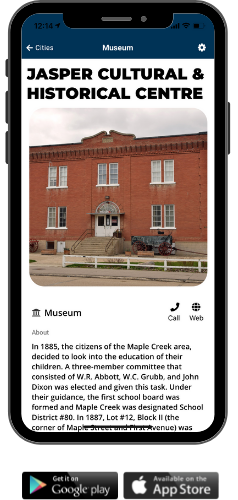Lunch with Owl
Paul Gravett, Executive Director, Heritage BC
Roundup Managing Editor, Lindsay Foreman, had the opportunity to interview Paul Gravett, Heritage BC’s outgoing Executive Director, about his career perspective on the arts, culture, and heritage sector and the broader world of not-for-profit organizations. Read on to learn more about what and how things have changed, Paul’s perceived contemporary challenges, and suggestions on how to move forward.

Paul Gravett.
Photo credit: Paul Gravett.
LF: Are you able to share about your professional background and what drew you to a career with not-for-profit arts, culture, and heritage organizations?
PG: Heritage is not my background. It’s not in my training. I studied piano and have a piano performance degree. Early in my career, I lived in Toronto for a number of years and decided that performing wasn’t for me, it wasn’t a good match. So I decided to move on from that and started working for a management firm that found concert, opera, and orchestral placements for musicians. I ultimately ended up in B.C. on Salt Spring Island and continued working in the arts.
After many years of running performing arts centres and programming music, concerts, and educational activities, I decided to start working as an independent consultant. During that period I did a lot of interim management work. I would go into a company and usually help them find a solution to their problem.
In some ways, that’s how I came to Heritage BC. I had done a little bit of work for Heritage BC on their strategic plan. The Executive Director needed to step aside for a period of time and she asked me to come in as an organizational caretaker while she was away for two to three months. After approximately eight months, she realized that she could not come back to work for personal reasons.
LF: Would you like to share about the evolution of your role/experience as Heritage BC’s Executive Director?
PG: The simple caretaking role that I initially took on grew as the Board asked me to stay on. I had learned a lot about the sector in a short period of time: the language, the people, the ways things are done, and the overall practise. I found a lot of the challenges quite interesting and I also thought that there were a lot of opportunities that could be realized. I found it quite stimulating from that point of view.
Looking back, it’s been a huge learning curve for me. I think in some ways, it was a test for me as an administrator to learn how my skill sets are transferable. Five years later, I’m now stepping out of the position, having learned quite a lot. I’ve enjoyed it and I think the company has changed quite a bit, but I do think there is a considerable amount of change yet to come.
It’s been in many ways a privilege to work in the sector and to meet a lot of interesting people. I’ve come across some amazing people who have remarkable passions for what they do. Some really inspiring people.
LF: The Heritage BC team grew under your direction, didn’t it?
PG: I wouldn’t say it grew, but it definitely changed a lot. We had a centralized office when I started and we had to move to another office. Then we decided we would have no office, with one staff member in Victoria, another in Nelson, and I live in the Lower Mainland in New Westminster. There were some benefits to that going into the COVID-19 pandemic; it was business as usual for us. Our work has also changed a lot: the roles that we play, the tasks that we undertake, and our focus.
LF: Would you like to speak to some of these changes?
PG: The company is in its 40th year. It comes from a place that was very much about the built environment, as supported both then and now, by provincial legislation. My predecessor had started to add other organizational foci, the largest of which is social heritage = people. What happened in the past and what is happening today?
We’ve always promoted the idea that heritage is timeless. Through the State of Heritage Provincial Roundtables, people saw the story of heritage as timeless and seamless. I use the term story as this was another element that participants put forward. It was probably the most used word during the State of Heritage; heritage is about the story. For instance, what happened in a building, who lived in a building, why was the building erected in the first place, what has happened to the building over a period of time?
We also recognized the importance of the more people-centric values and that the story should include all of us collectively. These social values of heritage were very much part of the community. We’ve taken it very seriously to gently push forward. It is always important for us to find that balance of all the different needs, the new priorities coming into heritage, and how we define and describe heritage; sharing about how the practise of heritage keeps changing.
My hope is that the company continues along this path when I leave. We’ve started some very good conversations and built better connections between different groups to improve cultural awareness. We’ve also developed some excellent resources, like the recently launched (May 2021) Setting the Bar: A Guide to Achieve New Standards for Reconciliation within the Heritage Sector.
We’re a company of three people with a very small budget and we have to be smart and say, what is our mandate, what are our resources, who are our constituents, and work within this. I’ve been lucky with my Board and with the people around me. There’s a real synergy of ideas and direction. We don’t see our role as telling people what to do, but rather, it is our responsibility to help people do better at what they do. Our role is more around leading people to the resources, helping with the education, exposing ideas, and giving them the tools to work with.
LF: Heritage BC and the BCMA have collaborated on a number of different initiatives over the years. Have you seen this relationship, and those with other organizations, change during your time with Heritage BC?
PG: BCMA is the closest organization to Heritage BC. There was always a strong interest in working together and we’ve recently been able to advance that much more as circumstances have allowed for more collaboration. Collaboration is about people, not companies.
Right from the beginning, I was astounded by the amount of duplication in the heritage sector and the amount of overlap. That has not changed. I don’t see good collaboration. I see the word used a lot. I see good intentions. I’ve been very disappointed through the pandemic, which presented an opportunity to start to rethink how we work together. It comes down to people. We’ve had some really good relationships with some people, some organizations, then the personnel changes, and the relationship changes.
LF: Would you like to share your thoughts on funding within the arts, culture, and heritage sector?
PG: It’s a monumental issue. But I think we need to start by holding a mirror up to ourselves; we’ve contributed to this beast and overburdened the system. There are just too many organizations and too much infrastructure. I have heard from all different types of not-for-profit organizations: we’re underpaid, we’re poor, we’re not respected. But who sets the budget? At some point, the Executive Directors and the Boards have to say enough is enough – we can’t underpay, we can’t perpetuate these poverty levels. On the other side, where is the money coming from? I’ve seen a lot of money disappear in my time. Sometimes grant programs come in, but it is much easier to cut the grant programs than it is to find new money for the grant programs.
LF: What arts, culture, and heritage sector issues have you been thinking about/reflecting on during the COVID-19 pandemic?
PG: Through the pandemic, a lot of conversations have underscored to me where arts, culture, and heritage sit in the hierarchy of issues; the reality is that we sit very low. The common perception is that the public, and all levels of government, don’t really understand what we do and that we need to better describe what we do so that they can better support us. How do we describe our social value?
There’s probably a lot we can learn from sports. Our society does not question sports. We accept the fact that it is vital for every individual to play sports. We put money into sports without a second thought. In arts, culture, and heritage, we wring our hands trying to justify what we do. We have to stop repeating things like “we need the arts” and “culture is life.” After a while, they become meaningless and I am not sure the right people are listening or understanding.
In consulting and strategic planning, there’s a process called the five whys; it is a perpetual digging down to the root of a problem. Now is the time to identify some of the challenges that we are facing and to start addressing them and understanding their complexities.

Reappearance 5
Photo credit: Paul Gravett.
LF: Are you able to share what you feel are some of the biggest challenges currently facing the arts, culture, and heritage sector?
PG: The heritage sector is changing a lot. What we do and why is very much in question; we are very much at a transitionary point right now. We put a lot of time and effort into a lot of focused needs at the moment. I sometimes worry where all of this is leading.
I don’t think the system that we have right now is sustainable. There are too many people doing too much of the same thing. We are all reinventing wheels. Heritage writ large is very diverse and there are a lot of priorities. People know what they know and they focus on what they know. We need to ask ourselves, “what is the sum of the parts – what is that big picture,” and “is there not a better, more efficient, sustainable way of doing this work?”
So much of heritage is in the hands of the politicians. I’ve repeatedly seen how one person in a position of power, such as a Mayor or a Board Chair, who supports heritage is able to change the perspectives of an entire community, and quite quickly.
LF: You’ve been able to connect with and mentor a number of emerging professionals throughout your career. Do you have any sage advice to share with others as they pursue careers in the arts, culture, and heritage sector?
PG: Questions. Ask questions. Lots and lots of questions. And don’t stop asking questions. It’s the biggest way I’ve been able to learn. Try to understand people’s thinking, their concerns, their gaps – what’s missing – and through that I’ve learned so much. This approach has helped steer Heritage BC in new directions. Trying to understand, describing what it is that is before us, then making the decisions accordingly.

Colour Study 17
Photo credit: Paul Gravett.
LF: Is there anything else you would like to share?
PG: I think the sector has extraordinary potential. But I think we need the bigger players at the table, the Province for instance, and not just as a funder, but to bring together different sectors, to bring together different people and perspectives. Then there could be some pretty powerful change.
Not-for-profit organizations also have to stop wearing rosy glasses and painting everything in a “this too shall pass,” “the sun will rise tomorrow” perspective. We need to start being much more honest with funders and supporters. I think that this is already starting to change a little bit.
LF: What’s next for you as you transition to retirement?
PG: I’m going back to a very old interest, pre-teen actually. My father introduced me to photography and I latched onto that in a big way. Then performing arts came along and took over and I put photography aside. The last few years I’ve picked it up again and I’ve been developing a technique of art photography and want to spend more time doing that. And hopefully I will pick up a few contracts along the way. Another reinvention of myself.




